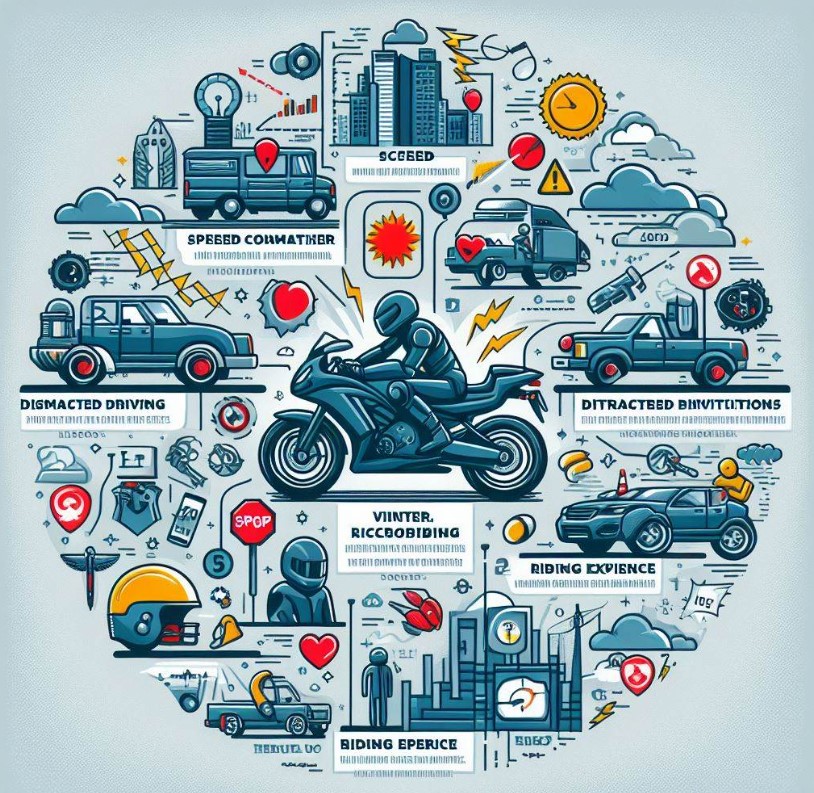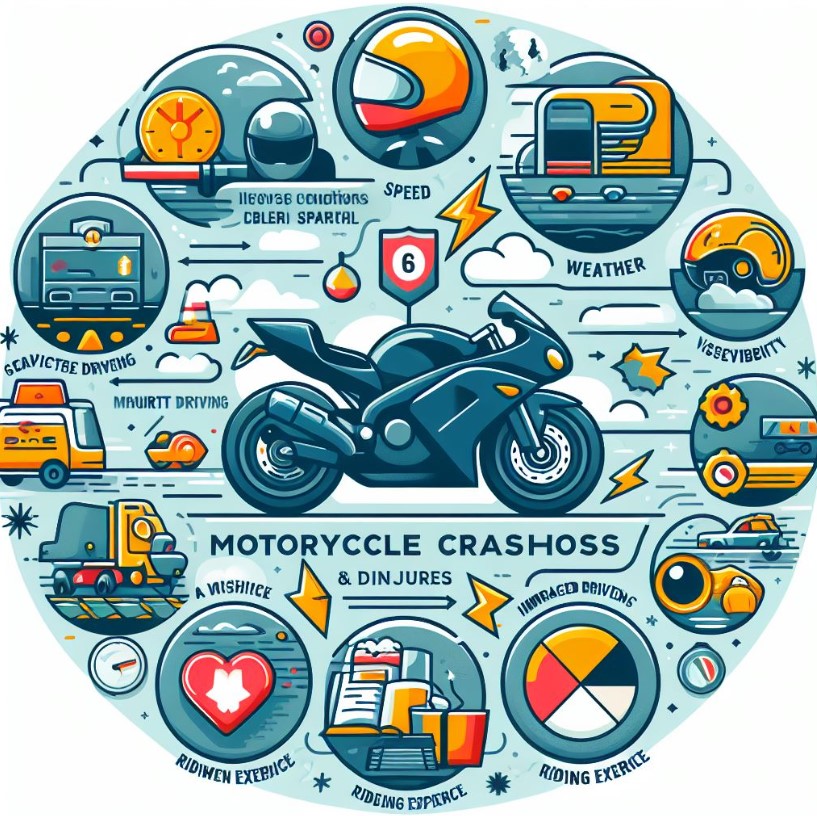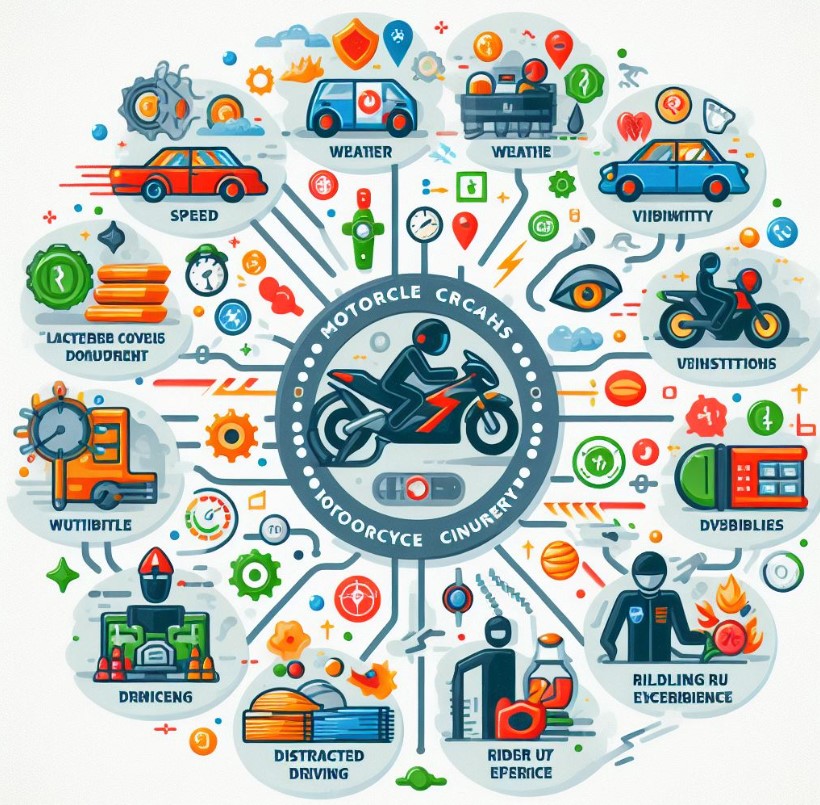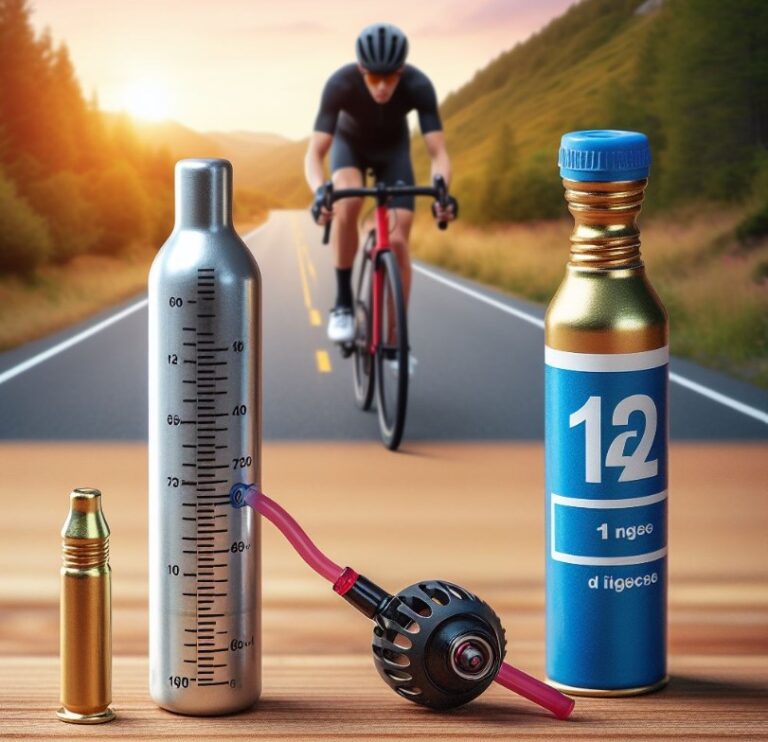Which Factors Lead To More Motorcycle Crashes? Explained
Motorcycle riding brings a sense of freedom and exhilaration, but it’s not without its risks. Understanding Which Factors Lead To More Motorcycle Crashes? is crucial for riders and policymakers alike. From environmental conditions to rider behavior, various elements combine to increase the risk on the roads. By identifying these factors, we can work towards safer riding practices and improved road safety measures.
Key Takeaways
- Speeding and reckless riding significantly increase crash risks.
- Lack of protective gear leads to severe injuries in accidents.
- Poor weather conditions contribute to a higher number of crashes.
- Inexperienced riders face a greater risk of accidents.
- Alcohol and drug use impair riding abilities and judgment.
Which Factors Lead To More Motorcycle Crashes?
The main factors contributing to motorcycle crashes include rider inexperience, speeding, and the influence of alcohol or drugs. These elements drastically affect a rider’s ability to react and make informed decisions on the road. Enhanced awareness and adherence to traffic laws can mitigate these risks, ensuring a safer riding experience for everyone involved.

Rider Inexperience
Inexperienced riders lack the skills necessary to navigate complex traffic situations and may not react appropriately in emergencies. Education and practice are vital in developing these essential riding skills. Mandatory training courses and graduated licensing can significantly reduce the incidence of crashes involving new riders.
Speeding and Reckless Riding
Speeding reduces a rider’s reaction time and increases the severity of crashes. Reckless maneuvers, such as weaving between lanes or ignoring traffic signals, compound these dangers. Enforcing speed limits and promoting responsible riding behaviors can decrease the likelihood of high-speed accidents.
Influence of Alcohol and Drugs
Impairment due to alcohol or drugs severely affects a rider’s judgment and motor skills. Sobriety checkpoints and public awareness campaigns can help reduce the number of crashes related to substance abuse.
Adverse Weather Conditions
Bad weather, including rain, snow, and fog, can lead to poor visibility and slippery road surfaces, increasing crash risks. Riders should be educated on the importance of adjusting their speed and riding techniques to match weather conditions.
Lack of Protective Gear
The absence of helmets, gloves, and other protective gear can turn minor accidents into fatal injuries. Campaigns promoting the use of proper safety equipment are crucial in protecting riders.
Road Conditions and Hazards
Potholes, debris, and uneven road surfaces pose significant risks to motorcyclists. Regular road maintenance and clear signage can help minimize these dangers.
Visibility Issues
Motorcycles are less visible to other road users, leading to collisions. The use of reflective gear and daytime running lights can improve a motorcyclist’s visibility on the road.
By addressing these key factors, we can create a safer environment for motorcycle riders and reduce the number of crashes. The responsibility lies with both riders and policymakers to implement and adhere to safety measures.
Rider Inexperience
Rider inexperience stands out as a critical factor leading to motorcycle crashes. New riders often underestimate the complexity of navigating a motorcycle through varying traffic conditions and may not have the reflexes developed to respond to sudden hazards.
Comprehensive training programs and a focus on skill development can bridge this gap, ensuring that novices become competent riders before hitting the road.
Moreover, the transition from learning environments to real-world traffic can be overwhelming for inexperienced riders. Mentorship programs and continuous learning opportunities can help new motorcyclists gain confidence and experience, reducing the likelihood of accidents.
Speeding and Reckless Riding
Speeding is a major contributor to motorcycle accidents. The thrill of high speeds can be tempting, but it comes with increased risks. At higher speeds, the ability to react to sudden obstacles or changes in traffic conditions is significantly reduced. Campaigns promoting the dangers of speeding and strict enforcement of speed limits are necessary to curb this dangerous behavior.
Reckless riding behaviors, such as lane splitting, sharp turns, and aggressive acceleration, further exacerbate the risks associated with speeding. Education campaigns and rider training programs should emphasize the importance of defensive riding and respect for traffic laws to mitigate these risks.
Influence of Alcohol and Drugs
Alcohol and drug use impair cognitive functions and motor skills, making riding a motorcycle extremely dangerous. The effects of substances can lead to poor decision-making, delayed reactions, and an inability to navigate traffic safely.
Strict enforcement of DUI laws and educational programs highlighting the dangers of riding under the influence are essential in reducing alcohol and drug-related crashes.
Community outreach programs and support groups can also play a significant role in addressing substance abuse issues among riders. By promoting sober riding and providing resources for those struggling with addiction, we can decrease the number of impaired riders on the road.
Adverse Weather Conditions
Weather conditions significantly impact motorcycle safety. Rain, snow, and fog not only reduce visibility but also make road surfaces slippery, challenging even the most experienced riders.
Awareness campaigns should focus on educating riders about the dangers of adverse weather and the importance of adjusting riding styles and speeds to match conditions.
Furthermore, investment in weather-appropriate gear can make a substantial difference in rider safety. Waterproof clothing, anti-fog visors, and tires suitable for wet conditions can help riders maintain control and visibility during adverse weather.
How Does Speed Affect Motorcycle Safety?
Speed plays a critical role in motorcycle safety, impacting both the rider’s control over the vehicle and their ability to respond to unexpected hazards.
When a motorcyclist exceeds the speed limit, their reaction time diminishes significantly, leaving less room to avoid collisions or adjust to sudden changes in road conditions. High-speed impacts are also more likely to result in severe injuries or fatalities, as the force of the crash increases exponentially with speed.

Furthermore, speeding can lead to legal repercussions, including fines, license suspension, and increased insurance rates. By adhering to speed limits and riding at a pace that allows for adequate reaction time, motorcyclists can significantly reduce their risk of accidents.
Educational campaigns and stricter enforcement of traffic laws are essential to remind riders of the dangers of speeding and encourage safer riding practices.
What Role Does Weather Play in Motorcycle Accidents?
Weather conditions significantly impact motorcycle riding, with rain, snow, and fog creating hazardous riding environments. Wet roads reduce tire traction, making it harder for motorcyclists to brake and maneuver.
Additionally, poor visibility during heavy rain or fog can make it difficult for riders to see and be seen by other road users. Motorcyclists must be especially cautious in adverse weather, reducing speed, increasing following distances, and using lights and reflective gear to improve visibility.
To mitigate weather-related risks, riders should invest in appropriate gear, such as waterproof clothing and anti-fog visors, and consider attending advanced riding courses that cover wet-weather riding techniques.
Public awareness campaigns can also educate riders about the importance of adjusting their riding habits in poor weather conditions, ultimately reducing the number of weather-related motorcycle accidents.
Why Is Protective Gear Important for Motorcyclists?
Protective gear is vital for motorcyclists as it provides a crucial barrier between the rider and the elements, as well as the road and other hazards. Helmets, in particular, are essential for protecting against head injuries, which are among the most serious and common outcomes of motorcycle crashes.

In addition to helmets, jackets, gloves, pants, and boots designed specifically for motorcycle riding can protect against abrasions, cuts, and fractures during an accident.
Moreover, protective gear can enhance visibility and comfort, contributing to overall safety and riding enjoyment. Brightly colored or reflective clothing increases the likelihood of being seen by other road users, while proper attire can shield riders from weather-related discomforts, allowing them to maintain focus and control.
Encouraging the use of protective gear through education and legislation can significantly reduce the severity of injuries sustained in motorcycle accidents.
How Do Road Conditions Influence Motorcycle Safety?
Road conditions have a profound influence on motorcycle safety. Potholes, uneven surfaces, gravel, and debris can pose significant hazards to motorcyclists, who require a stable surface for safe riding.
Poor road maintenance can lead to accidents, as riders may lose control or be forced to make sudden maneuvers to avoid obstacles. Local governments and transportation authorities should prioritize the maintenance of roadways and the removal of hazards to create a safer environment for motorcyclists.
Riders, on the other hand, should remain vigilant and practice defensive riding techniques to navigate through less-than-ideal road conditions safely.
This includes reducing speed, maintaining a safe following distance, and avoiding sudden moves that could result in loss of control. Education and awareness programs can help riders develop the skills needed to handle various road conditions, further enhancing their safety.
How Can Rider Training Improve Motorcycle Safety?
Rider training is essential for improving motorcycle safety, as it equips individuals with the knowledge and skills necessary to navigate traffic safely and respond to emergencies.
Beginner courses provide foundational skills, while advanced courses cover more complex situations such as high-speed maneuvering and emergency braking.

Regular participation in training programs can keep riders’ skills sharp and up-to-date, reducing the likelihood of accidents caused by rider error.
In addition to improving individual safety, rider training programs promote a culture of safety within the riding community, encouraging responsible riding behaviors and respect for traffic laws. By investing in rider education and encouraging continuous learning, we can create a safer riding environment for everyone on the road.
Conclusion
Motorcycle crashes can often be prevented by addressing the factors that lead to them. From improving rider education to enforcing speed limits and DUI laws, a multifaceted approach is necessary to enhance road safety.
Riders must take personal responsibility for their safety by wearing proper gear, riding sober, and gaining the necessary experience before taking to the streets.
By acknowledging and addressing the various factors that lead to more motorcycle crashes, we can work towards a safer riding environment for everyone.
People Also Ask
What defensive driving techniques should motorcyclists use?
Defensive driving techniques for motorcyclists include maintaining a safe following distance, being alert to the actions of other drivers, anticipating potential hazards, avoiding distractions, and being prepared to take evasive action if necessary. By practicing defensive driving, motorcyclists can improve their safety on the road.
How do road conditions affect motorcycle safety?
Poor road conditions such as potholes, cracks, loose gravel, and debris can be particularly hazardous for motorcyclists. These conditions can cause a motorcycle to destabilize, leading to accidents. Riders should remain vigilant, reduce speed, and avoid problematic areas of the road whenever possible.
Are motorcycles allowed to lane split?
Lane splitting, the practice of riding between lanes of slow-moving or stopped traffic, is illegal in many places. However, some regions allow lane splitting under specific conditions. Riders should be familiar with and adhere to local laws regarding lane splitting and always prioritize safety when navigating traffic.
How can motorcyclists improve their skills?
Motorcyclists can improve their skills by taking beginner and advanced riding courses, practicing regularly in different conditions, staying informed about best practices and safety tips, and learning from experienced riders. Continuous education and practice help riders develop better handling, decision-making, and emergency response skills.

Welcome to the exhilarating world of Matt Rex, a professional car racer turned renowned vehicle enthusiast. Immerse yourself in his captivating blog as he shares heart-pounding adventures, expert reviews, and valuable insights on cars, trucks, jets, and more. Fuel your passion for speed and discover the beauty of vehicles through Matt’s engaging stories and meticulous expertise. Join the ever-growing community of enthusiasts who find inspiration and expert advice in Matt Rex’s blog—a digital hub where the thrill of speed meets the pursuit of knowledge.






